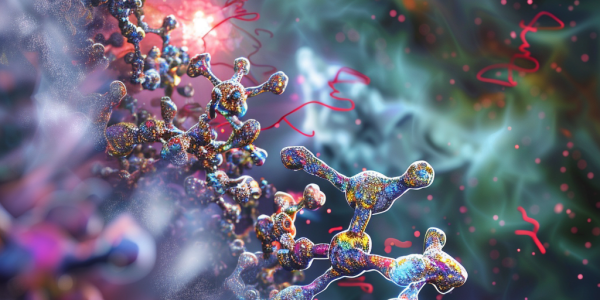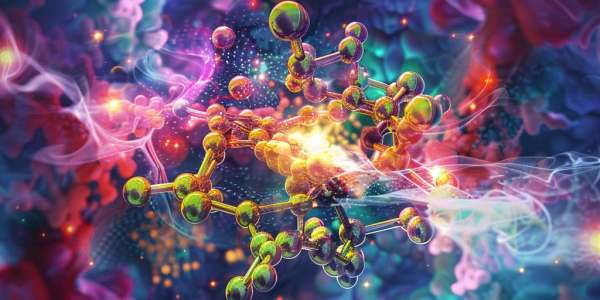Exploring the Complex Nature of Neutron Stars and Quark Matter
Explore the complex nature of neutron stars, remnants of massive stars primarily composed of neutrons. Recent research reveals their intricate internal structures, including the potential for exotic quark matter. Discover how pulsars, rapidly rotating neutron stars, provide insights into their density and behavior, shedding light on the extreme conditions within these celestial phenomena.
Breakthrough in Quantum Physics: Researchers Control Hybrid Electron-Photon States in Helium
An international team led by Dr. Lukas Bruder has achieved a groundbreaking milestone in quantum physics by successfully controlling hybrid electron-photon quantum states in helium atoms using the FERMI free electron laser. This innovative research, published in Nature, utilizes advanced laser pulse-shaping techniques to manipulate quantum states, paving the way for advancements in quantum computing and technology. Discover how this study could revolutionize the field of quantum mechanics and its applications.
Three Novel Superconductors Discovered, Expanding Understanding of Quantum States
Researchers have identified three new forms of superconductivity in two-dimensional materials, revealing diverse electron pairing mechanisms that challenge existing theories. This breakthrough could lead to revolutionary technologies, including room-temperature superconductors, lossless power grids, and advanced transportation systems. The discoveries highlight the versatility of materials science and promise to deepen our understanding of superconductivity.
Revolutionary Electron Microscopy Project Aims to Transform Understanding of Chemical Reactions
Researchers from the University of Illinois Chicago have launched the MOSAIC project, backed by a $1.8 million NSF grant, to revolutionize electron microscopy techniques for observing chemical reactions in real-time. This initiative aims to enhance our understanding of atomic interactions and could lead to breakthroughs in materials science, drug development, and nanotechnology.
Breakthrough Study Reveals Ultrafast Dissociation of Heavy Molecules
A groundbreaking study at BESSY II reveals the ultrafast dissociation of bromochloromethane molecules under X-ray light, showcasing the ‘molecular catapult effect.’ This research, published in The Journal of Physical Chemistry Letters, enhances our understanding of molecular dynamics and has potential applications in materials science and chemistry.
Groundbreaking Study Reveals Nano-Switch Mechanism in Electron Carrier Protein
A groundbreaking study from Japan reveals a nano-switch mechanism in ferredoxin, a crucial electron carrier protein essential for energy production in living organisms. This research uncovers how a single hydrogen atom influences the protein’s electron transport capabilities, enhancing our understanding of redox reactions. The findings hold promise for developing ultra-sensitive sensors and novel therapeutic agents, paving the way for advancements in environmental monitoring and medical diagnostics.
Navigating Privacy and Scientific Breakthroughs in Nanotechnology
Explore the critical intersection of privacy and nanotechnology advancements in our digital age. Understand the implications of cookie consent on personal data processing and discover groundbreaking research on manipulating single-molecule reactions, paving the way for innovations in pharmaceuticals and materials science.
Breakthrough Study Reveals Mechanisms of CO₂ Reduction Using Ni-N-C Catalysts
A groundbreaking study reveals how nickel and nitrogen co-doped carbon (Ni-N-C) catalysts can effectively convert carbon dioxide (CO₂) into carbon monoxide (CO), offering significant industrial applications for reducing greenhouse gas emissions. Led by the Max Planck Society, researchers employed advanced techniques to uncover the mechanisms behind CO₂ reduction, paving the way for innovative sustainable technologies that transform CO₂ into valuable resources.
Nuclear Clocks: A New Era in Precision Timekeeping
Nuclear clocks, a groundbreaking advancement in timekeeping, promise to exceed the accuracy of traditional atomic clocks by tenfold. This innovation could revolutionize GPS navigation and space exploration, offering unprecedented precision by measuring time based on atomic nuclei energy levels. As research progresses, nuclear clocks may redefine standards across various fields, impacting everything from telecommunications to fundamental physics.
Breakthrough in Nuclear Physics: Scientists Successfully Produce Livermorium Isotope
A groundbreaking achievement in nuclear physics has been made by an international team of scientists at Lawrence Berkeley National Laboratory, successfully producing the superheavy element livermorium (element 116). Utilizing the advanced 88-Inch Cyclotron, researchers conducted a record-breaking 10,000 trillion fusion attempts, paving the way for future discoveries of new elements, including the theorized element 120. This significant milestone enhances our understanding of atomic structure and the potential applications of superheavy elements in various scientific fields.










